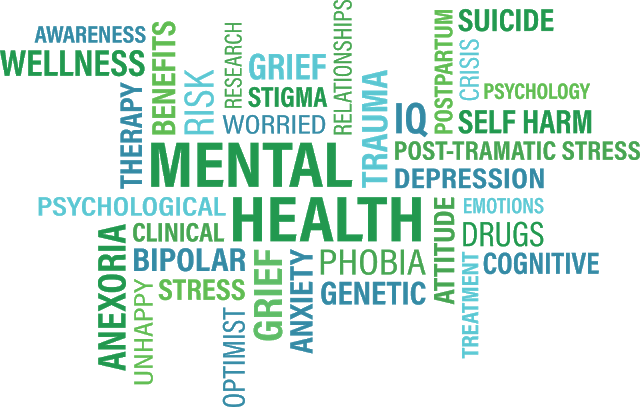Epilepsy is a 5% genetic chance that a brain neuron will cause a disorder
A man suddenly fainted in the car, foaming in his mouth, and frightened the surrounding passengers. The doctor in the car immediately laid the man flat on the floor of the carriage and took first aid measures to save the man's life. What exactly is epilepsy, and how should we treat and respond to it? In this issue of Medical Report of CCTV Health, Zhao Quanjun, the chief physician of neurosurgery and director of the stereotactic and functional neurological diagnosis and treatment center of 306 Hospital, invited us to scientifically understand epilepsy.
Epilepsy is a genetic chance of a disorder caused by neurons in 5% of people's brain
Epilepsy The most common manifestation of this is loss of consciousness, twitching limbs, people tube which is called epilepsy. Because before twitching, many people screamed, screaming like the sound of a sheep when they are in a hurry .
Epilepsy genetic chance is only 5%
Epilepsy is mainly caused by the day after tomorrow, with a small genetic probability. According to statistics, only 5% of the children born to parents with epilepsy have epilepsy. If you pay attention and protect in life, it is almost impossible to inherit it to the next generation, not to mention the next generation.The clinical manifestations of epilepsy are divided into three categories
According to the classification of the International Antiepileptic Coalition, the clinical episodes of epilepsy are divided into three categories. One is irritable seizures, the other is general seizures, and the other is seizures that cannot be classified.
Irritable seizures are often patients with a clear mind and no loss of consciousness, but he will feel that some parts of the body are abnormal, such as having inductance and numbness, which are called purely sensory seizures. There are also some irritable attacks, which were irritable at first, but soon spread to the whole body, also called Jackson attacks, which is also a type of irritable attacks.
Generalized seizures, loss of consciousness, and knowing nothing.
An outbreak that cannot be classified , there is no way to distinguish whether he is comprehensive or impatient, and the positioning cannot be classified. Some patients have headaches when they have an attack, but they can't locate which one hurts. They have no irritability. But he did not lose consciousness, nor was it a generalized attack, which he classified as an unclassifiable attack.
24-hour dynamic EEG to identify epilepsy
The most direct way to determine if you have epilepsy is to do an EEG. In the brainwaves of patients with epilepsy, waveforms unique to epilepsy can be found, such as arrow waves, shock waves, or slow and slow waves, as well as other waveforms unique to epilepsy. If no unique waveform is found , epilepsy is not ruled out . It may be because the examination time is short and the waveform has not been released. It is generally recommended to do a 24-hour dynamic EEG and continuous monitoring for 24 hours, it is easier to find and make a diagnosis of epilepsy waves . In addition, there are other tests to be done, such as magnetic resonance , to see if there are any organic problems in the brain.Parents should be protected from childhood epilepsy
Childhood and old age are the peak periods of epilepsy.Why do children get it? Because children's brain functions are not perfect, they are susceptible to external interference. For example, at birth, dystocia will cause cerebral ischemia and hypoxia in infants and children, and their functions will be prone to epilepsy.There are some trauma, such as when a child just learning to walk, possibly the bumps, are likely to cause epilepsy;
Again, a child with a fever to 40 degrees, also can cause damage to neurons. Because the child 's brain neurons still not fully mature, it may be a little high fever can cause damage injury;Another 5% of patients have heredity. Children with a genetic predisposition and parents with epilepsy should eat less irritating foods in their diet to avoid as many triggers as possible.
How to get first aid in case of seizures
When a patient has a seizure, there may be sputum in the respiratory tract, and sputum clogging may cause further hypoxia. At this time, the patient must be turned to the side so that the contents of the mouth can flow out, and the white foam in the mouth of the epilepsy patient cannot be sucked into the trachea. .Second, avoid biting the patient's tongue. Use paper, handkerchiefs, etc. to stuff the patient's mouth so that the patient's teeth can bite on the soft things instead of biting his tongue.
In addition, pay attention to bumps and seizures. If there are peripheral devices, such as iron railings, etc., the patient moves very strongly and may be injured if hit.
Some patients have normal seizures, but do n’t be too nervous. The duration of the seizures will not exceed 5 minutes. If more than 5 minutes may become a state of epileptic seizures, you must go to the hospital. Patients who are self-conscious within five minutes Does not require excessive treatment.
Classification and treatment of epilepsy surgery
There are three types of epilepsy surgery
First, directly deal with epilepsy focus. Through magnetic resonance examination and EEG, localized lesions were found. Localized lesions are the culprit for seizures and are surgically removed.Second, cut off the transmission of epilepsy. A large area of neurons in a patient with epilepsy discharges synchronously, causing limb convulsions, which must "pass down". The doctor tried everything to prevent it from being "passed down." Overhead convulsions in brain functional area lesions, this method can be used for limited lesions. A wide range of epilepsy origins can be corpus callosum incision (the human hemisphere is divided into the left hemisphere and the right hemisphere, and the connection between the two hemispheres is called the corpus callosum), so that the discharge of the left hemisphere of the brain is not transmitted, and it will not Causes a clinical attack.
It is also possible to intentionally block certain conductive elements through minimally invasive surgery and stereotactic to prevent the epilepsy discharge from spreading downward. But surgery does not completely cure epilepsy, it just relieves symptoms.
Third, strengthen the function of the suppression system. The human brain is very similar to society. The human brain has two systems, one is the excitatory system and the other is the suppression system. The suppression system is equivalent to the social police. To strengthen the suppression system is to strengthen social security work. Suppression system surgery was first carried out by chronic cerebellum stimulation. The cerebellum is equivalent to the "police" in the entire central nervous system. Cerebellar function is enhanced, which can inhibit the discharge of the cerebral cortex and prevent the brain from being over-excited. Internationally, more nerve stimulation is carried out. An electrode is placed on the vagus nerve of the neck, and it is regularly stimulated to strengthen its function and also suppress the epilepsy of the entire brain.
Not all refractory epilepsy can be cured by surgery
Treatment of refractory epilepsy is mainly performed by surgery, but various indicators need to be evaluated before surgery. First perform a magnetic resonance examination of the head to rule out any organic lesions on the head, such as vascular malformations and tumorous lesions. In addition to magnetic resonance, EEG should be performed to see where the epilepsy lesions are. If the origin of the lesions is found to be limited, it is suitable for surgery. If the magnetic resonance examination is negative, no lesions are found, and localized lesions are not found in the EEG. Such patients have poor surgical results.How to choose craniotomy vs minimally invasive surgery?
The differences between craniotomy and minimally invasive surgery are:
If the craniotomy can directly find and remove the lesion, the patient's epilepsy control will be good. It is like the appearance of criminal gangs in the society, and the gangs will be destroyed, and they will never endanger the society. Minimally invasive surgery is equivalent to grabbing the leader of a criminal gang, but other gang members are still there, and the degree of epilepsy control is relatively poor.The disadvantage of craniotomy is that if a large piece of brain tissue is to be removed, it will inevitably affect the surrounding tissues, the risk is greater, the trauma is greater, and the minimally invasive surgery is less invasive.
It is recommended that patients with no special lesions found in magnetic resonance imaging. If you decide to perform surgery, consider minimally invasive surgery first. Even if the effect is not good, the next step is craniotomy. Having a craniotomy, some risks and injuries are irreversible.
Memory is key in patients with epilepsy
Surgery to remove the lesion, the healing power is relatively high. In refractory epilepsy, facial epilepsy accounts for a large part. If this facial epilepsy is cut off with the hippocampal structure on the inner side of the face, the rate of complete epilepsy control should be about 70%, and the other types of epilepsy patients will also be significantly improved. Symptoms, some irritable lesions, the effect is also good after removal, almost half of patients with seizures disappear.Minimally invasive surgery, such as minimally invasive surgery for facial epilepsy, mainly damages the hippocampal structure. Damage to the point that causes epilepsy discharge, about 50% of patients can completely disappear after the seizures.
However, the hippocampal structure governs human memory, and it needs to be completely removed after craniotomy, and the patient's memory may be affected after surgery. Especially for bilateral epilepsy, one hippocampal structure is cut away, and one is still able to give birth to a part of the memory function. If both sides are cut off, the person has no memory. Minimally invasive surgery retains the entire hippocampal structure and only destroys the discharge site, which has very little effect on the patient's memory.
How to choose craniotomy vs minimally invasive surgery?

After epilepsy, medication and diet should be adhered to
Many patients with epilepsy and their family members feel that they are cured after the operation and do not need to take medicine. This is wrong.Surgery only creates opportunities for patients with epilepsy. Many are incurable, but only reduce the number of attacks.Even a patient who is completely in control just creates a condition for him not to have an attack.No seizures can be announced for a decade.So be sure to continue taking medicine for at least two years after surgery.If there is no seizure for more than two years, you can consider reducing the drug slowly, but also cooperate with the EEG test to reduce the drug to see if there is any epilepsy discharge. If so, reduce the drug carefully.Epilepsy diet and living three attention to emotional management is important
There are three aspects to eating and living in epilepsy patients:
First, diet: Do not eat spicy food, seafood. Pay attention to even some odorous vegetables, such as parsley, leek, celery, onion, ginger, garlic, etc.Second, life should be regular: sleep on time, get up on time. Not to be noisy, such as song halls, bars, dance halls, not irritating eyes, ears, including the noise of construction sites. TV and games are also prone to epilepsy. Watch TV for an hour a day, do not play exciting games, and do not watch flashing, colorful pictures.
Third, the control of emotions, there are many patients with epilepsy, especially those with facial epilepsy, are irritable and emotionally volatile. When the emotions come up, the brain discharge increases. When you are angry, all the neurons in the brain may be excited, and it is easy to synchronize the excitement and cause seizures. Maintaining emotional stability is also an important factor in preventing the re-currence of epilepsy.

















No comments:
Post a Comment